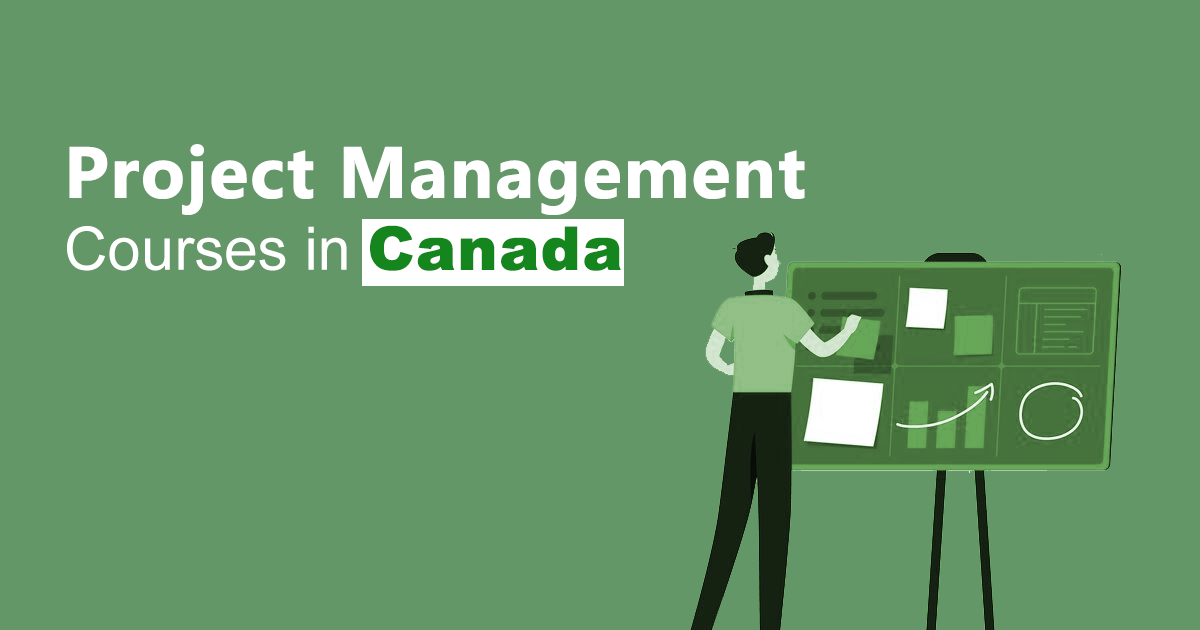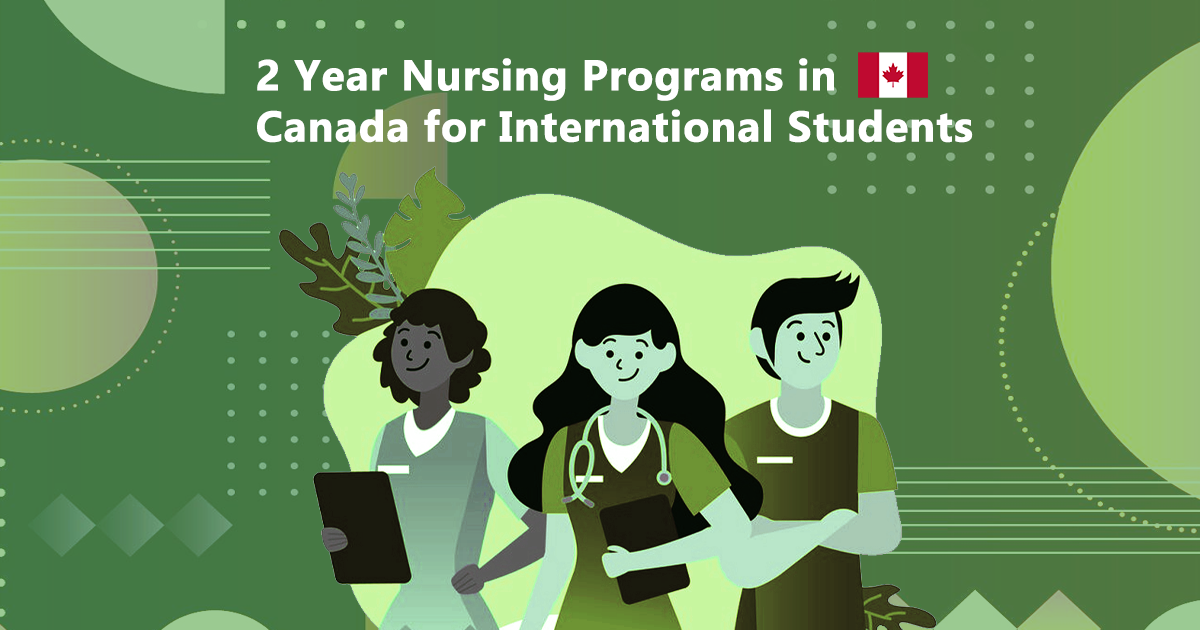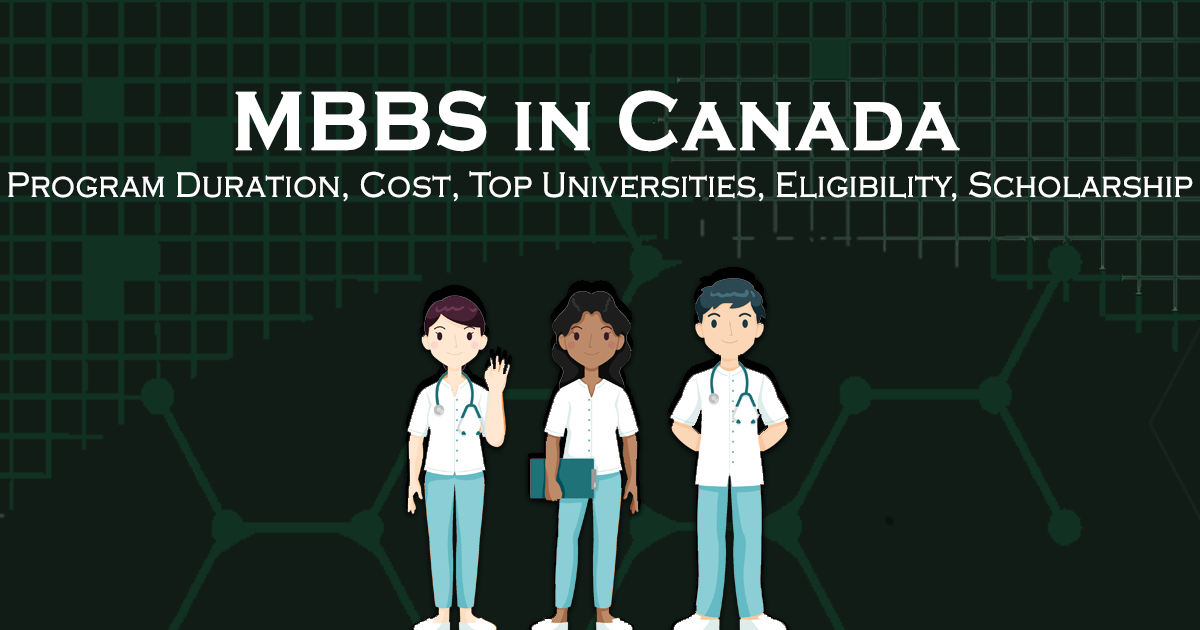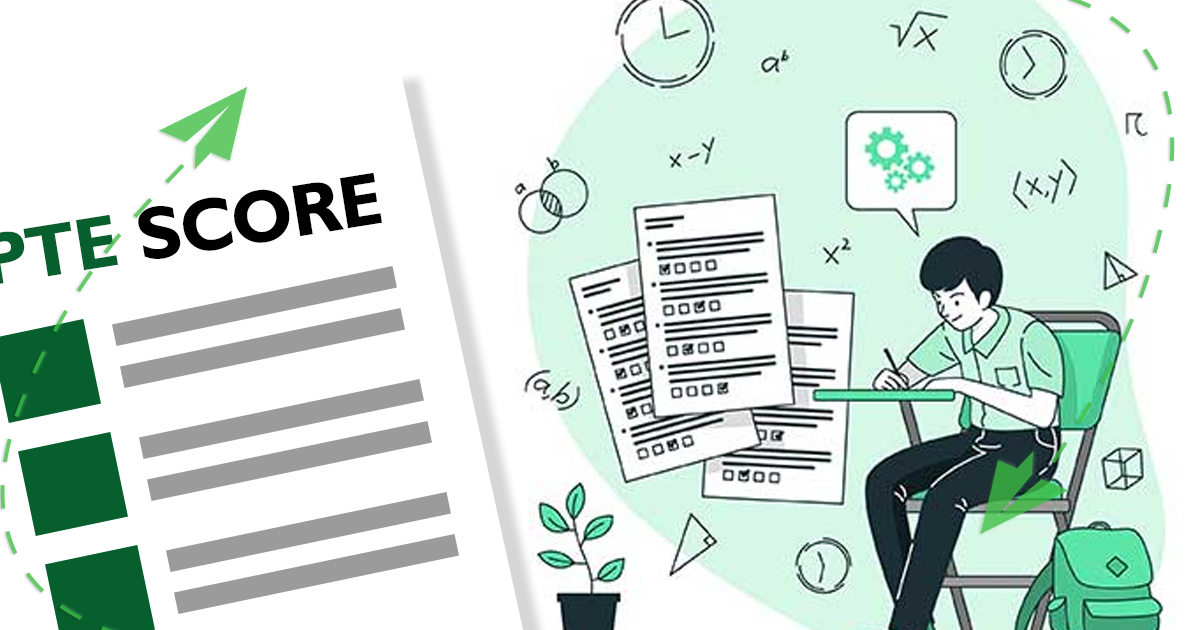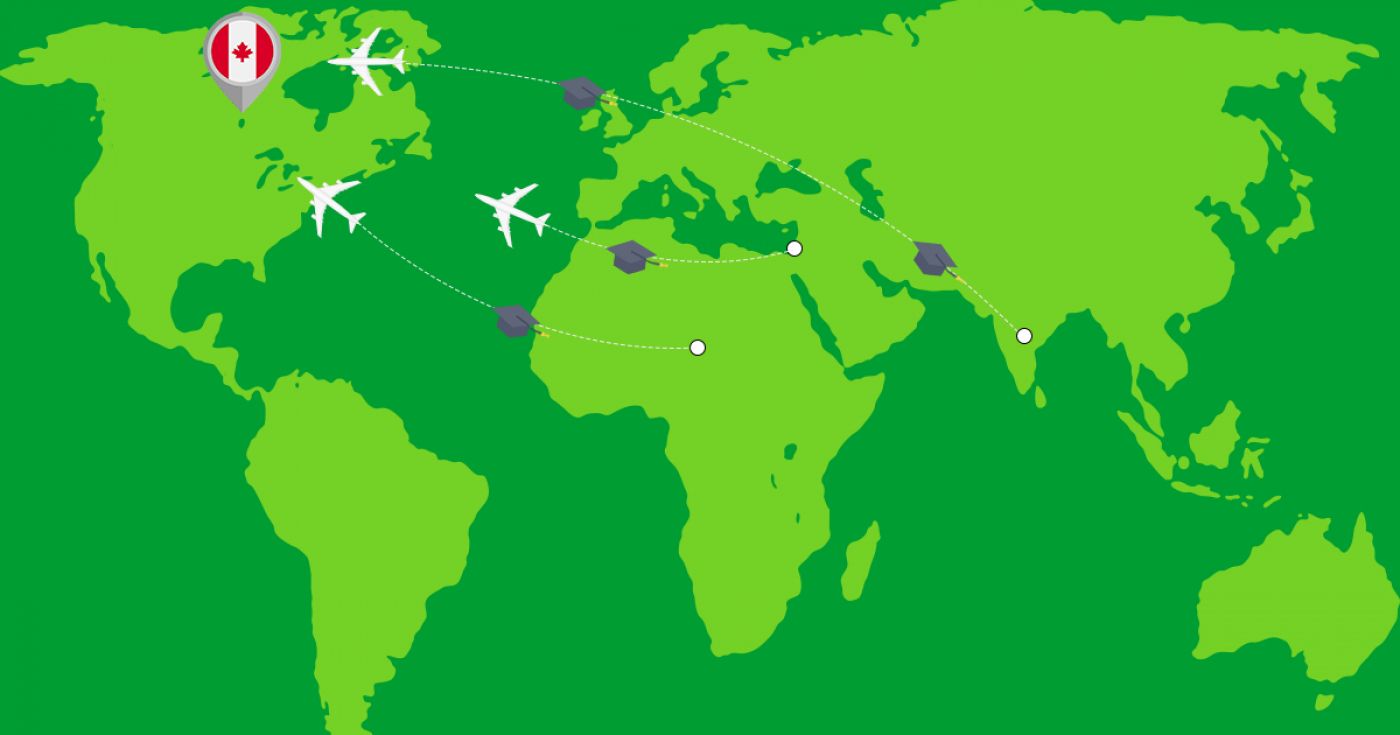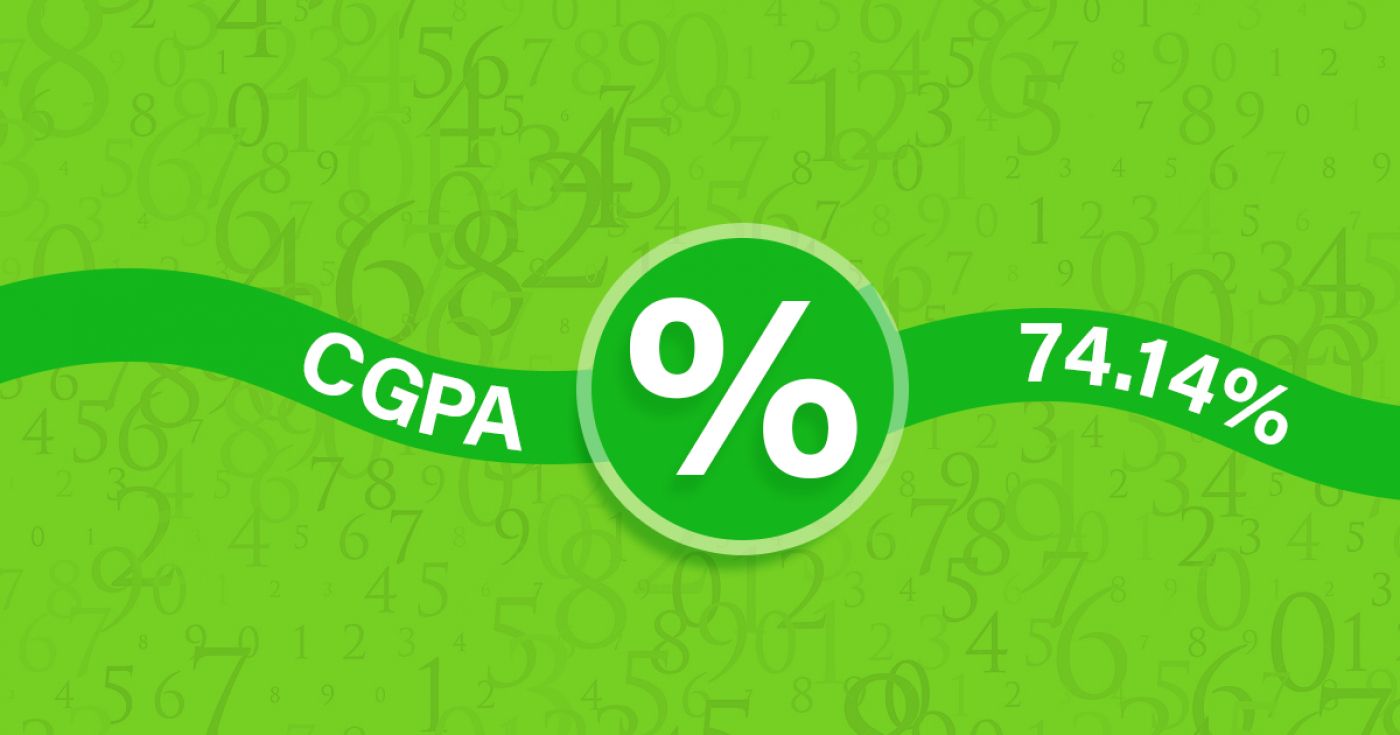Graduate Certificate in User Experience (UX) Design
at Humber College North Campus Canada
Overview
Humber’s User Experience (UX) Design graduate certificate simulates the interdisciplinary approaches needed to achieve an innovation process with a focus on design desirability, technological feasibility and business viability. In two semesters, you will be prepared to innovate by problem finding through design research, problem understanding through synthesis, and problem solving through design and prototyping experiences. You will learn how to create valuable courses of action by generating design problem hypotheses, structured design process plans, compelling UX deliverables and persuasive arguments.
You will learn human-centered design methods and rhetoric that ground your design in the needs of the public. In addition, you will learn how to use interaction design and design systems through industry-standard quality assurance methods, and how to design and implement user interfaces to follow corporate strategies. A variety of conceptual and practical work will help you develop effective UX design skills.
As a user experience designer, you will employ the work-practice of prototyping concepts in order to describe ways to integrate digital services with material products and environments. As a UX researcher, you will discover insights through usability testing and apply them to create value for corporate clients and their customers. Toward the conclusion of this program, you will convert your acquired skills and achievements into a portfolio of design products that will help you launch a career as a UX design professional. This program fosters the practical discipline, relevance and currency essential in the contemporary, ever-growing UX job market.
LEARNING OUTCOMES
Upon successful completion of the program, a graduate will:
- Facilitate team processes towards effective completion of user experience design projects.
- Represent a linked sequence of observed evidence, collected data, qualitative research findings, interpretations and proposed design solutions to stakeholders to solicit support and commitment.
- Assess requirements of a user experience design project, in order to increase corporate acceptance, usability and effectiveness.
- Present persuasive arguments in support of user experience projects which balance user needs with business objectives.
- Design a complex user experience project which considers a business uncertainty and plans for multiple outcomes.
- Manage projects using current and proven methodologies to coordinate the work of a multi-disciplinary user experience design team.
- Adapt recommendations and courses of action in accordance with explicit and implicit cultural, professional and ethical constructs involved in solving user experience design problems.
- Factor and refactor research methods and insight-generating frameworks in order to facilitate, inform and guide team problem-solving.
- Resolve uncertainties and create shared purpose with stakeholders using iterative prototyping.
- Evaluate, adjust and communicate design decisions in alignment with financial, technical, and usability factors.
30
Application Processing Days
Post Graduate
Program Level
Fact & Figures
Full Time On Campus
Study Mode
24
Duration
Humber College North Campus
Location
Graduate Certificate in User Experience (UX) Design Assistant Fee
$19997
Tuition Fee
$12000
Average Cost of Living
$75
Application Fee
Graduate Certificate in User Experience (UX) Design Admissions Requirements
- Minimum Level of Education Required: To be accepted into this program, applicants must have a Bachelor’s Degree in a related field or equivalent.

Get superfast admissions at top Graduate Certificate in User Experience (UX) Design institutes in 2024
Benefits of choosing
➤Admission’s guaranteed at Top institutes across the world.
➤Enjoy exclusive application fee waiver’s with Edmissions.
➤Unlimited FREE Counselling sessions with Edmission’s
Experts
➤Get Tips from industry veterans to crack the IELTS exam in 1
week.
➤Assistance with scholarships, loans, forex, student accommodation and visa guidance.
Work Permit Canada
Students who wish to work in Canada require a work permit to do so. A student in Canada can work part-time during the course of his studies and full-time during holidays and semester breaks and post the completion of their course/program.
Rules for getting a part-time work visa in Canada
You can also work part-time on campus at your university.
Work Permit
Duration
Your part-time work permit will be valid for as long as you have a valid study permit.
Working Hours
20 Hours/Week
As a full-time student, you can work for a maximum of 20 hours a week. However, you can work full- time during holidays and breaks.
Document Required to Work in Canada
List
To apply for a work permit, you will need a study permit that mentions that you are allowed to work part-time on campus.
Social Insurance Number
Study Permit
You will need a Social Insurance Number (SIN) to Service Canada. if you wish to work in Canada during the course of your studies. To apply for the same, you need a valid study permit, and you should be a full- time student at a recognized university.

You can work part-time off-campus if you are studying in the Quebec province.
Duration of Work Permit Canada
Your part-time work permit will be valid for as long as you have a valid study permit.
Work Hours Canada
As a full-time student, you can work for a maximum of 20 hours a week. However, you can work full- time during holidays and breaks.
Document Required to Work in Canada
To apply for a work permit, you will need a study permit that mentions that you are allowed to work part-time on campus.
Social Insurance Number
You will need a Social Insurance Number (SIN) to Service Canada if you wish to work in Canada during the course of your studies. To apply for the same, you need a valid study permit, and you should be a full- time student at a recognized university.
Working after completing your course
In Canada, you will need a work permit to get a full-time job in Canada after finishing your studies. You chose a work permit like the Post-Graduation Work Permit (PGWP) if you wish to stay back in Canada and work full-time.
Visit Government of Canada Website for more detail
Post-Graduation Work Permit (PGWP)
The Post- Graduation Work Permit (PGWP) allows you to work for three years in Canada if you have completed a two years degree or more.
Application
how can i apply
You can either apply online or download the form and mail the application along with the required documents. Pay your fee and then wait for the decision to come.
Application Documents Required
List
To apply for the work visa, you need a degree from a recognized and accredited Canadian University along with an intention to stay and work in Canada only temporarily.
When to Apply?
One can apply for the full-time work permit in the first three months post the completion of their course during which the study permit is still valid.
How long does it take?
90 days
You will have to wait for 90 days for the decision on your work permit.
Duration
3 Years
The work permit is valid for 3 years if you have completed a two years degree program or more.
Fees
CAD 255
The fee for the work permit is CAD 255 plus the holder fee and the work permit processing fee.
Monthly Wages
CAD 1,600
An applicant is guaranteed a minimum salary of CAD 1,600 per month while working in Canada. This amount though varies on the job and the province you are working in.
Work Hours Canada
No Limit
There is no maximum limit, and you can work for as many hours as you want on the full-time work permit.

Required Documents
List
To apply for the work visa, you will need the following documents:
- Forms: IMM 5710, IMM 5476 and IMM 5475;
- Graduation Proof
- Proof of payment of work permit fees
- Copies of your travel and identification documents, passport pages and current immigration document.
Till a decision is made on your work visa, you can continue to work full time. All you need to have is your completed degree, should have applied for the permit before the expiry of your study permit and you should be allowed to work off-campus.
Information
Disclaimer
The information provided about the work permit is true and complete to the best of our knowledge. All recommendations are made without any guarantee on the part of the author or the publisher. The author and the publisher, therefore, disclaim any liability in connection to and with the use of this information.
Detailed Program and Facts
30
Application Processing Days
Full Time On Campus
Program Intensity
Post Graduate
Program Level
24
Duration
Study Visa
Student Visa For Canada
Any student who wishes to study in Canada requires a student visa. Some of the essential information for the application process is given below.
When Should I Apply?
4 to 6 months
Ideally, one should apply for the study permit at least 4 to 6 months before the commencement of your course/program.
Bank Account
No Need!
There is no need for a blocked bank account to apply for a student visa to Canada.
Duration of visa
Course Duration + 3 Months
The student visa is valid for the entire period of your course plus three months.
Time to Wait for Visa
35 Days
It takes time. It might take up to 35 days post your interview for the application process to complete and for you to finally receive your visa.
Appointment
Required
It varies from applicant to applicant, but one may have to take part in one or two visa appointments, namely a medical examination and a visa interview.
How you can apply
Application Process
An applicant can either apply online or offline by visiting a visa application centre and submitting their documents. After the analysis of your application, you might be called for an interview.
Fee
Visa Fee
The visa application fee for Canada is CAD 150.
Minimum Funds
833 CAD, 917 CAD
You require a minimum monthly amount to be deposited into your account to prove that you can sustain yourself while studying in Canada. If you are studying in Quebec, you need to have a monthly minimum of CAD 917, and if you are studying in a province except for Quebec, you need to have a minimum of CAD 833 per month.
Any other expenses
Required
You will have to pay a medical examination fee and a visa application service fee to the tune of CAD 15 if you visit a visa application centre to apply for your visa.

Medical Examination
Required
One has to undergo a series of medical examinations to be deemed fit for a student visa of Canada. The tests mostly include blood and urine tests, chest x-rays and other organ checkups.
Language Skills
Not Required
one doesn’t need to prove their language skills in applying for a Canadian Visa.
Disclaimer: The information provided about the work permit is true and complete to the best of our knowledge. All recommendations are made without any guarantee on the part of the author or the publisher. The author and the publisher, therefore, disclaim any liability in connection to and with the use of this information.
Other Courses by Humber College North Campus,Canada
Health Sciences, Nursing and Emergency Services
Diploma in Hearing Instrument Specialist
Hearing instrument specialists (HIS) are valued members of a hearing health-care team. They conduct comprehensive diagnostic hearing assessments, develop hearing health-care plans, dispense advanced digital assistive hearing devices and evaluate outcomes using evidence-based verification methods.
In the Hearing Instrument Specialist diploma program, you develop the academic knowledge and hands-on, real-world experience required to become a valued hearing health professional. We combine online and in-person learning models, work-integrated learning, exceptional faculty and state of the art facilities to prepare students to skillfully work within their scope of practice and collaborate effectively as part of an interdisciplinary health-care team. Graduates of our program develop the confidence to adapt to the evolving needs of today’s patient and the emerging technologies for patient care and hearing devices.
This program develops holistic and critical thinkers, confident clinicians and compassionate communicators who will become outstanding professionals, effective practitioners and leading contributors in their field.
Program Highlights
Experience a number of interesting and unique courses within the program such as:
- Fundamental Principles of Hearing Devices
- Learn the history of hearing aids, basic principles of electronics and circuitry, and how this relates to the circuitry of hearing devices and styles of hearing aids. Apply this knowledge to choose the appropriate hearing device for a patient profile, and how to compare the benefits and limitations of each hearing aid style.
- Patient Psychology and Counselling Skills
- Explore the individual, familial, and societal impacts of hearing loss on a psychological, emotional, and social level. Formulate the necessary skills to connect with patients on an empathetic, culturally sensitive, and professional level. Become adept at in-depth case history taking and having goal-oriented discussions to motivate patients in their hearing rehabilitation.
- Disorders
- Identify various pathologies within the peripheral and central auditory system. Collaborate confidently with other medical professionals if referral is warranted. Through this course, you will understand the pathologies behind different types of hearing loss such as hyperacusis, tinnitus, and noise induced hearing loss.
24 month
Duration
$ 16500
Tuition
Business & Management
Advanced Diploma in Business Administration
Humber’s Business Administration advanced diploma program allows you to develop extensive knowledge on how businesses work and teaches you to become competent in the full range of skills needed to facilitate business operations.
Courses in operations management, accounting, human resources management, marketing research and much more will give you the opportunity to cultivate key business skills such as communication, teamwork, project management and strategic business analysis. This program is built on a common platform of a solid business education – principles of management, marketing, business law, finance mathematics and microeconomics. This common platform is shared with other business diploma programs in year one and is expanded on in year two.
Work Placement
You’ll be assisted in finding a paid or unpaid business work placement where you’ll practise your skills during an 84-hour assignment. This adds valuable hands-on experience to your resumé. Close relationships with the business professionals who constantly update the curriculum will give you valuable networking contacts.
36 month
Duration
$ 16394
Tuition
Hospitality, Tourism, Wellness Leisure & Sports
Diploma in Culinary Management
Humber’s Culinary Management diploma program teaches you the skills you need to excel as a chef in the culinary industry. Work in the world’s finest dining establishments, and take advantage of international study opportunities. Kick your career up a notch by competing in on-campus, national and international skill competitions.
This program will also prepare you to to design, organize, implement, serve and execute your own dinner event in the “Chef's Table” course. Using a market-related themed menu, mise en place and à la carte cooking, students will showcase classical and contemporary techniques and skill. The Charcuterie and Advanced Garde Manger courses involve students using contemporary level food presentation, styling techniques and becoming proficient with various butchery processes on a wide range of meats. The Emerging Trends course is unique among Ontario colleges, providing students with the opportunity to work alongside local guest chefs. Students also have the opportunity to experience preparing meals on the Humber Food Truck, Humber’s classroom on wheels. In addition, students work alongside some of the country’s best chefs. Students receive unmatched time spent with several leading chefs about what’s happening in today’s restaurant scene and food industry.
Note: A fast-track program is implemented for the January start. The first semester (January to April) is immediately followed by the second semester (May to August), resulting in a short summer break. The third semester begins in September, allowing students to complete the two-year program in just 16 months.
Qualified students will complete work placements in the kitchen of a leading hotel, restaurant or golf course of their choice for seven unpaid weeks in the fourth semester (40 hours per week). Students are also able to apply for placements across Canada and internationally, which has jumpstarted many successful careers.
The demand for passionate, well-trained chefs around the world is constant, and with more than 7,000 restaurants reflecting a wide variety of cultures and cuisines, Toronto is the ideal place to launch your culinary career. The creative culinary and management skills you’ll gain at Humber will put you in high demand in hotels, restaurants, golf clubs, resorts, hospitals, corporate settings and more. If you have an entrepreneurial spirit, you’ll be inspired by the potential to start your own business in the future. Food service is a constantly evolving industry that has never been more in the spotlight, and culinary management at Humber is your gateway.
24 month
Duration
$ 16394
Tuition
Creative Arts & Design
Certificate in Design Foundation
Humber’s Design Foundation certificate program provides you with the skills to focus your creativity as you begin a career in design. If you have a clear interest in visual art and design, but want to upgrade or build your portfolio of work, or explore various design disciplines while considering your future career, this is the program for you. With a deep scope of experience in a variety of design facets, our faculty provides you with an industry-current perspective of your work while offering you a broad based preparatory design education. You will develop design skills, techniques and processes; and learn about various professional career choices while developing and refining your comprehensive portfolio. Your training is led by professional designers from a variety of disciplines in a curriculum that features courses in:
- 1, 2 and 3-Point perspective drawing
- 2D and 3D principles
- Colour theory
- Interior design
- Industrial design
- Graphic design
- Design software such as Photoshop, Illustrator and AutoCAD
You will also work in professional-quality labs, developing skills that will give you the hands-on experience employers want.
Designers influence the development of products, the packages they come in and the marketing materials used to promote them. We also rely on designers to plan all types of buildings and to create inviting spaces within them.In Toronto’s vibrant creative sector, the demand for talented and skilled designers is strong. Your generalized training in the many aspects of design may be an effective launching pad to more specialized design study in various fields including industrial design, interior design, interior decorating, graphic design, architecture, civil engineering or building technology.
12 month
Duration
$ 16394
Tuition
Architecture and Construction
Diploma in Building Construction Technician (Co-op Optional)
Humber’s Building Construction Technician diploma program is one of three stackable programs within the Carpentry-Construction group. Along with the Carpentry and Renovation Techniques certificate and the Construction Engineering Technology advanced diploma, the program introduces students to the carpentry trade, gives practical experience with trade regulations and with best practices. Students will be able to move from this diploma program into the advanced diploma program. Additionally, Humber’s Carpentry and Renovation Technician diploma and Industrial Woodworking Technician diploma offer additional pathways and laddering opportunities.
You will learn worksite health and safety practices in accordance with legislation and regulations; and how to review building plans and complete work in compliance with contractual obligations, codes, applicable laws, bylaws, standards and ethical practices. Coursework will include sustainability practices.
You will learn to produce project sketches and documents in accordance with project specifications, assist in the preparation of estimations and to safely operate tools. You will be well-prepared for all building stages - from site layout and footings to the application of interior and exterior finishes.
Optional Co-op
This program offers a co-op option. A co-op work term enables you to apply your skills and knowledge in a work environment and gain valuable, practical experience related to your program of study. You will learn new skills, learn about the world of work and meet people in your profession.
For students who are accepted into the program, one co-op work term will take place between Semesters 2 and 3. There are limited spaces in the co-op option. Therefore, you will apply for the co-op option during Semester 1 and be informed of the process by which to apply. While co-op work opportunities are not guaranteed, as students are in a competitive job placement market, participating students will receive a wide range of services to help them find a co-op opportunity.
24 month
Duration
$ 16394
Tuition
Business & Management
Graduate Certificate in Supply Chain Management
Humber’s Supply Chain Management graduate certificate program provides you with a solid grounding in both business and global supply chain issues. Major changes in processes and technology have led to a high demand for workers with modern supply chain skills.
You will learn to research and analyze the marketplace; develop demand forecasts; evaluate suppliers’ capabilities to deliver; utilize technology such as Systems, Applications, and Products in Data Processing (SAP); develop aggregate and master production plans/schedules; and analyze business processes.
You will also learn industry-standard theories, methods, and techniques (Six Sigma, Total Quality Management, Just-in-Time, Lean) and how they apply to supply chain management strategies and problem solving.
Humber is a SAP University Alliances member school, ensuring you learn this key supply chain management software.
12 month
Duration
$ 17608
Tuition
Health Sciences, Nursing and Emergency Services
Certificate in Personal Support Worker
Humber’s Personal Support Worker certificate program gives you the skills you need for a career in this in-demand health-care field. Begin a rewarding career helping people in need such as the elderly, the chronically ill and people with physical disabilities.
The program is designed in collaboration with industry, ensuring you are learning current and relevant material. In this program, you will learn:
- The developmental stages across the lifespan, and the communication and interpersonal skills needed for effective client relationships
- The essentials of providing personal care, applying mobility techniques (lifting and transferring clients), and household management and safety
- Key issues of mental health disorders
- Skills in dealing with common medical conditions including facilitating rehabilitation exercises and assisting with medications
Through assisting individuals at a long-term care facility and in other settings, you will learn to recognize the physical and emotional changes of aging and illness, and become familiar with the restorative techniques used to maximize independence.
Work Placement
- Two unpaid work placements take place in Toronto and the Greater Toronto Area (GTA). In Semester 1, the practicum is completed in a controlled lab environment for six hours per week. This practicum is fully supervised by one instructor per group of approximately ten students. In Semester 2, the practicum is completed at a variety of agencies and facilities.
- The Semester 2 practicum is divided into two rotations over the 13 weeks: 160 hours in a long-term care facility and 120 hours in a community agency. Hours and number of days per week vary depending on the type of facility and shifts assigned; most range from seven to eight hours per day or evening. Students begin placement in the first week of January.
- Placements give you valuable first-hand experience which will serve you well when beginning your career.
12 month
Duration
$ 16414
Tuition
Architecture and Construction
Advanced Diploma in Architectural Technology
Humber’s Architectural Technology advanced diploma program will train you to use your logical and critical thinking skills as you apply architectural technology to construction and building design. You’ll learn from full-time, award-winning professors and licensed architects who bring real-life perspective and valuable industry contacts to you. The curriculum is designed with industry collaboration, ensuring you are learning current and relevant material. In the program, you will learn:
- Computer-aided drawing, building methods and project management using the most current computer programs such as AutoCAD and Revit (Building Information Modelling)
- Construction technologies for materials such as wood frame, steel, masonry and precast concrete, and project management skills
- Hands-on skills including building code, building specifications, estimating, and structural and mechanical knowledge
- Sustainable design skills needed in today’s eco-friendly architectural technology field
Courses include instruction in freehand sketching, history of architecture, renovation and restoration, site planning, and technical communications. Architectural Technology electives include bath and kitchen, interior detailing, building code (legal), small building residential design and more.
Get hands-on experience in the architectural technology industry during an optional architectural field placement. The placement normally takes place from May through August following semester four (minimum 400 hours). Humber provides a range of services to support students including working with business, industry and government to identify work placement opportunities.
Build a strong future for yourself with a career in architectural technology. Building construction continues to grow, and contractors expect the number of skilled laborers to decline, providing a need for new graduates to enter the architectural technology field. Our graduates work:
- In producing design and construction documents for architectural offices
- As project co-ordinators, estimators and project inspectors for contracting firms
- As housing specialists for design firms
- As sales representatives for construction equipment manufacturers
- As building inspectors and plan examiners for municipalities
The rapid growth in construction and building in Toronto and southern Ontario, combined with Humber’s strong reputation in the industry, provides graduates with strong employment opportunities.
36 month
Duration
$ 19615
Tuition
Health Sciences, Nursing and Emergency Services
Diploma in Practical Nursing
Humber’s Practical Nursing diploma program provides the skills and knowledge needed to become a registered practical nurse (RPN). You will develop, practise and refine your skills in our state-of-the-art clinical simulation, computer and bioscience labs with direct clinical practice and simulated laboratory experiences. Humber is a leading-edge facility in every respect. This program has been awarded the highest rating for accreditation - a testament to its excellence. Practice and learn in our bioscience and health science laboratories – including clinical simulation labs that provide hands-on learning in a controlled environment. Continuous placement in a range of clinical settings enhances your ability to apply in-classroom education to real-life situations.
You will participate in a total of 1,035 hours of unpaid clinical placements over the course of the program which take place over each semester and give you valuable hands-on experience. The school arranges and communicates with all placements. Throughout the first year of the program, you will participate in a unique community-service learning placement in a variety of community settings. In Semester 2, you will work in a long-term care setting, while Semester 3 takes place in rehabilitation, complex or acute-care settings. In Semester 2 and 3, you will also participate in clinical simulation and/or Stilwell (a virtual learning community designed to represent a typical Canadian neighbourhood). In Semester 4, you will complete a preceptored (one-on-one placement alongside a registered practical nurse) pre-graduate clinical practice.
According to Human Resources and Skills Development Canada, nursing is seen as a highgrowth career option with more than 14,000 openings projected annually until at least 2020. As a graduate of our program, you will be able to work in various health-care settings including acute-care hospitals, long-term care, rehabilitation services, community services, psychiatry, homes for the aging, public health units, community nursing agencies, clinics, private practices, schools and child-care centres. Many of our graduates go on to complete postgraduate advanced-skills education used in specialty disciplines such as surgery, dialysis, cardiology and emergency.
24 month
Duration
$ 16414
Tuition
Skilled Trades
Diploma in Esthetician and Spa Management
Humber’s Esthetician/Spa Management diploma program gives you the business management and hands-on skills you need for a career in the $119 billion Spa Economy (Global Wellness Institute, 2018). On the business side, learn the fundamentals of business writing, marketing, retail operation and day-to-day spa management. Hands-on courses focus on traditional services such as nail care technologies, advanced facial techniques, waxing, body treatments and makeup applications. As well, you will learn advanced medical esthetic services such as OxyGeneo, microdermabrasion, chemical peels, laser and Intense Pulse Light (IPL).
At Humber, you will practise what you are learning and improve your skills at The Humber Spa, a simulated work environment and retail boutique open to the community. Working under the guidance of qualified lab technicians, you will manage the administrative functions of the spa, including frontline responsibilities, retail operations and providing spa services. You will provide a series of treatments including facials, hand and foot care, and body treatments to clientele.
In the first semester, you will be introduced to spa management and client services, physiology of the skin, and professional skin care, and begin to train in traditional esthetic services. In the second semester, you will study computer applications, advanced facial techniques, waxing services and nail care. Later in the program, you will study marketing, cosmetic applications, human resource management and medical spa services.
Work Placement
Two work placements offer students experience working with clients. The placements will be onsite at The Humber Spa.
24 month
Duration
$ 16414
Tuition
View All Courses by Humber College North Campus, Canada
Top Study Abroad Exams
Popular Universities to Study Abroad
- University of Waterloo
Waterloo
- University Canada West
Vancouver
- University of Windsor
Windsor
- Cape Breton University
Sydney
- Dalhusie University
Halifax
- Carleton University
Ottawa
- University of Ottawa
Ottawa
- University of Guelph
Guelph
- Explore more colleges in Canada
- University of New Haven
West Haven
- Kent State University
Kent
- Wright State University
Dayon
- San Jose State University
West Haven
- Clark University
Worcester
- Rowan University
Glassboro
- Golden Gate University
San Francisco
- Arkansas
San Francisco
- Explore more colleges in USA
- Coventry University
Coventry
- University of Birminghame
Birminghame
- De Montfort University
Leicester
- Cardiff University
Cardiff
- BPP University
London
- University of West London
London
- University of Nottingham
Nottingham
- University of Warwick
Coventry
- Explore more colleges in UK
- Auckland Institute Of Studies
Auckland
- Massey University - Auckland Campus
Albany
- Eastern Institute of Technology - Auckland Campus
Auckland
- NorthTec - Auckland Campus
Auckland
- Massey University - Manawatu Campus
Palmerston North
- University of West London
London
- Wellington Institute of Technology (WelTec) - Petone Campus
Lower Hutt
- Otago Polytechnic - Dunedin Campus
Dunedin
- Explore more colleges in New Zealand
- Chandigarh University
Mohali
- Parul University
Vadodara
- Sharda University
Greater Noida
- Jain University
Bangalore
- Bennett University
Greater Noida
- Lovely Professional University
Phagwara
- Chitkara University
Rajpura
- Brainware University
Kolkata
- Explore more colleges in India
- Abu Dhabi University
Abu Dhabi
- Gulf Medical University
Ajman
- New York University
Abu Dhabi
- Emirates Aviation University
Dubai
- Higher Colleges of Technology
Dubai
- British University in Dubai
Dubai
- Al Ghurair University
Dubai
- American University in the Emirates
Dubai
- Rochester Institute Of Technology Dubai
Dubai
- Emirates Academy of Hospitality Management
Dubai
- American University of Ras Al Khaimah
Ras Al Khaimah
- Explore more colleges in UAE
- Ras Al Khaimah Medical and Health Sciences University
Ras Al Khaimah
Explore Colleges and Courses in Canada
- Arts & Humanities in canada
- Business & Management in canada
- Natural Sciences & Mathematics in canada
- Engineering & Technology in canada
- Computer Science & IT in canada
- Health Sciences, Nursing and Emergency Services in canada
- Social Sciences in canada
- Creative Arts & Design in canada
- Hospitality, Tourism, Wellness Leisure & Sports in canada
- Environmental Studies & Earth Sciences in canada
Latest Blog Posts
Trending Blog Posts
Search, Shortlist, Apply and get accepted! It’s that Simple to pursue your dream to Study abroad with Edmissions. Our team of experts provide you the right guidance that helps you to take admission in your dream college in countries like Canada, the USA, the UK
© 2021-2024 Edmissions - All rights reserved.
TALK TO OUR EXPERTS
